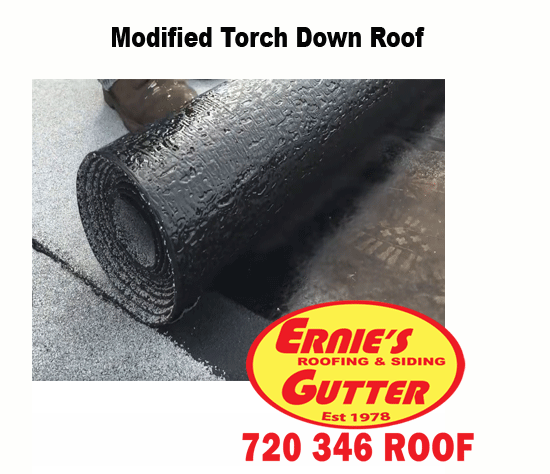Attic Vents and Ridge & Off-Ridge Ventilation
The Ultimate Guide to Attic Vents and Ridge & Off-Ridge Ventilation Maximizing Roof Longevity
The vital role of attic vents and ridge & off-ridge ventilation in maximizing roof longevity and preventing storm damage. Get expert tips and FAQs answered!
As a seasoned roofing contractor with decades of experience, I’ve seen firsthand the importance of proper attic ventilation in extending the lifespan of roofs and protecting homes from storm damage. In this comprehensive guide, I’ll walk you through everything you need to know about attic vents, ridge & off-ridge ventilation, and how they contribute to the longevity of your roof.
__________________________________________________________________________________________________
Hey there, friend! 👋 Welcome to Ernie’s Roofing blog, where we love sharing our passion for all things roofing-related. Today, I’m excited to dive into a topic that’s near and dear to my heart: attic vents and ridge & off-ridge ventilation. Trust me, it’s more fascinating than it sounds!
Understanding Attic Vents: The Backbone of Roof Ventilation
Let’s start with the basics: what exactly are attic vents, and why are they crucial for your roof’s health. 
Attic vents are like the unsung heroes of your roofing system. They allow air to flow freely through your attic space, preventing heat and moisture buildup that can wreak havoc on your roof’s structure. Without proper ventilation, you could be setting yourself up for a slew of problems down the road, including premature roof replacement and costly storm damage repairs.
The Power Duo: Ridge & Off-Ridge Ventilation
Now, let’s talk about ridge and off-ridge vents—the dynamic duo of ventilation.
Ridge vents are installed along the peak of your roof, while off-ridge vents, like roof louvers or gable vents, provide additional airflow along the roof-line. Together, they create a balanced ventilation system that keeps your attic cool, dry, and happy.
Pro Tip: When it comes to ridge vents, quality installation is key. Trust me, you don’t want to cut corners here!
Benefits Galore: Why Attic Ventilation Matters
So, why should you care about attic ventilation? Let me count the ways:
- Extended Roof Lifespan: Proper ventilation can add years to your roof’s life, saving you money on costly replacements.
- Prevention of Storm Damage: A well-ventilated attic is less prone to storm damage, thanks to reduced heat buildup and moisture retention.
- Energy Efficiency: Say goodbye to sky-high energy bills! Attic vents help regulate your home’s temperature, making it more energy-efficient year-round.
- Prevention of Mold and Mildew: Nobody wants a moldy attic! Proper ventilation keeps moisture at bay, reducing the risk of mold and mildew growth.
- Warranty Compliance: Some roofing warranties require adequate ventilation for coverage. Don’t risk voiding your warranty—make sure your attic vents are up to snuff!
Expert Tips for Optimal Ventilation
Now that you know why attic ventilation matters, let’s talk about how to do it right. Here are some expert tips to get you started:
- Choose the Right Vents: Not all vents are created equal. Invest in high-quality ridge and off-ridge vents for maximum airflow and durability.
- Proper Installation is Key: Don’t skimp on installation! Hire a reputable roofing contractor to ensure your vents are installed correctly and to code.
- Keep ‘Em Clean: Regular maintenance is crucial for optimal ventilation. Clear debris from your vents and inspect them for damage at least once a year.
- Monitor Moisture Levels: Keep an eye on your attic’s humidity levels. If things start to get too damp, it’s time to take action.
- Adjust as Needed: Don’t set it and forget it! Adjust your ventilation system as needed to accommodate changes in weather and season.
FAQs: Your Burning Questions, Answered
- Do I Really Need Attic Vents? Absolutely! Attic vents play a vital role in protecting your roof and home from damage caused by heat and moisture buildup.
- How Many Vents Do I Need? It depends on factors like the size and shape of your roof. A roofing contractor can assess your needs and recommend the right number of vents for your home.
- Can I Install Vents Myself? While it’s possible, we recommend hiring a professional for installation to ensure it’s done correctly and safely.
- What Happens if I Don’t Ventilate My Attic? Without proper ventilation, your attic can become a breeding ground for mold, mildew, and wood rot—not to mention skyrocketing energy bills!
- Do Ridge Vents Leak? When installed correctly, ridge vents should not leak. Proper installation and quality materials are key to preventing leaks.
- How Do I Know if My Attic Vents Are Working? Keep an eye (or nose) out for signs of moisture, mold, or musty odors in your attic. If you notice any of these, it could indicate a ventilation problem.
- Can Attic Vents Help Lower My Energy Bills? Absolutely! By regulating your home’s temperature and reducing the workload on your HVAC system, attic vents can lead to significant energy savings over time.
- What’s the Difference Between Ridge and Off-Ridge Vents? Ridge vents are installed along the peak of the roof, while off-ridge vents are placed at various points along the roofline to provide additional ventilation.
- How Often Should I Inspect My Attic Vents? We recommend inspecting your attic vents at least once a year, ideally before the start of the winter season.
- Are Attic Vents Covered by Home Insurance? Attic vents are typically considered part of your home’s structure and may be covered by your home insurance policy. However, coverage can vary, so it’s best to check with your insurance provider to be sure.
Conclusion: Invest in Your Roof’s Future
And there you have it—everything you need to know about attic vents and ridge & off-ridge ventilation! By prioritizing proper ventilation, you’re not just protecting your roof—you’re investing in the longevity and integrity of your entire home. So go ahead, give your attic the TLC it deserves, and enjoy peace of mind knowing your roof is in good hands.
Still have questions? Feel free to reach out to the pros at Ernie’s Roofing—we’re always here to help!
Stay dry, stay safe, and happy roofing! 🏠🛠️
Ernie’s Roofing: Trusted Roofing Contractor Since 1978 in Denver
📞 Call us at 720-346-ROOF
📧 Email us at info@roofingreplacementdenver.com
💻 Visit our website: erniesroofing.com
Focus Keyword SEO Meta Description: Learn from Ernie’s Roofing, a trusted roofing contractor since 1978 in Denver, about the vital role of attic vents and ridge & off-ridge ventilation in maximizing roof longevity and preventing storm damage. Get expert tips and FAQs answered!





